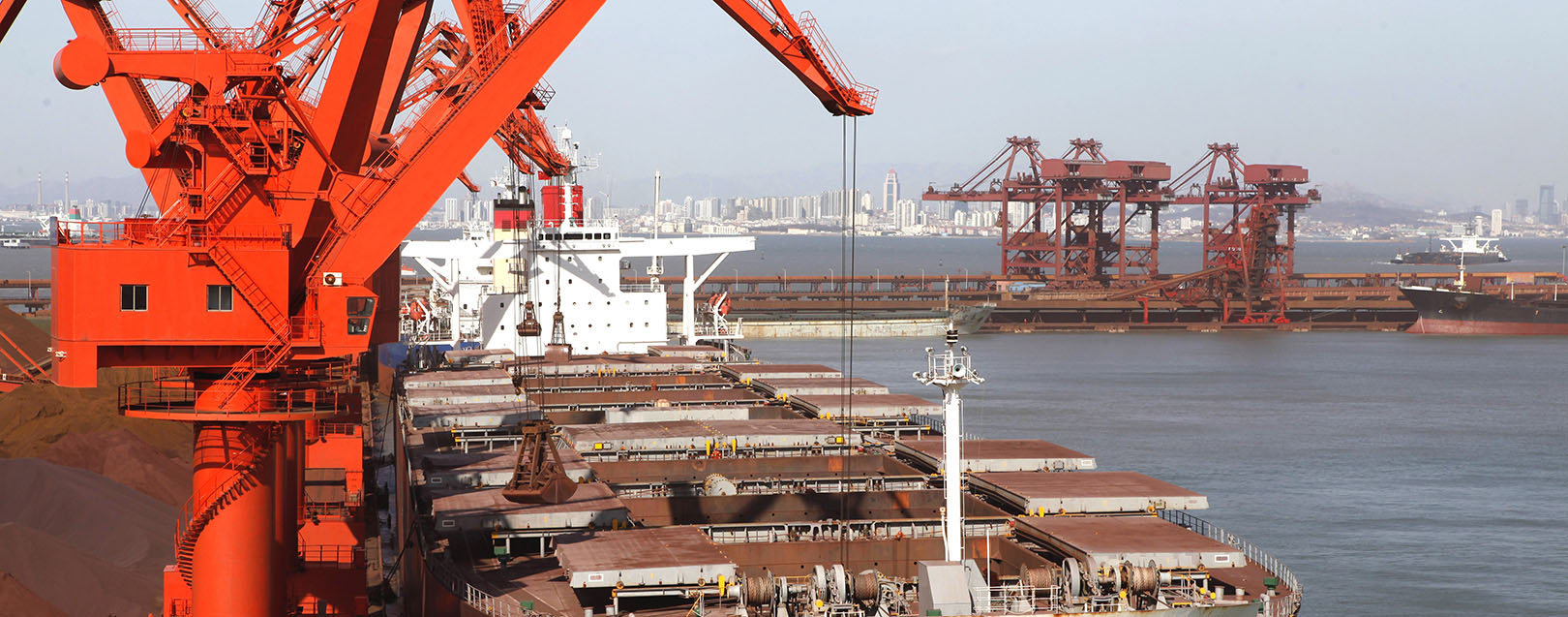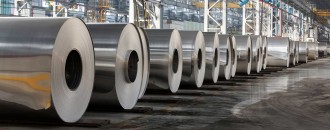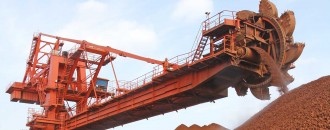
India’s iron ore imports ease, exports rise on policy support
Sreenivasa Rao Dasari
India registered a significant surge in exports of iron ore, ores and concentrates of copper and chrome during the first half of the 2016-17 financial year while witnessing an encouraging drop in imports of iron ore, ores and concentrates of aluminium, copper, chrome and manganese. Country's iron ore (HS code: 2601) exports were $432.14 million in April-September of 2016-17 financial year from $191.46 million for whole fiscal of FY-16. Iron ore imports eased to $116.87million in the first half of FY-17 from $494.25million in 2015-16 fiscal.
India recorded 7.23% growth in mineral production during April-September in FY-17 as against the 9% growth in 2015-16 financial year, according to the latest report from Union Ministry of Mines and Department of Industrial Policy and Promotion (DIPP). The surge in production of iron ore and chromite, which grew 25.85% and 25.9% respectively, primarily supported the growth rate of the overall mineral sector. Several policy initiatives helped liquidation of stressed assets and paved the way for more mergers & acquisitions (M&As), said the report.
As part of the National Mineral Exploration Policy (NMEP 2016), the Indian government has been implementing several measures including incentives, support on ease of doing business, tabs on illegal mining, etc., to support the domestic mineral sector. The report attributes reasons for the encouraging performance during the first half of 2016-17 fiscal in the mineral segment to the NMEP-2016.
NMEP-2016
During the last two years, the sector has witnessed major policy initiatives to promote exploration and enhance private sector participation that has aided in the sector’s growth.
National Mineral Exploration Policy (NMEP-2016) encourages the private sector participation through its revenue sharing model. Fiscal incentives & measures for ease of doing business.
Under NMEP, around Rs. 201 crores have been deposited till May 2016. 13 mineral exploration projects in Madhya Pradesh, Odisha, Maharashtra, Chhattisgarh, Karnataka and Jharkhand have been approved.
Surge in FDI Inflows
Foreign direct investments (FDI) inflows rose 1,606% to $1.2 billion from April 2014 to March 2016, when compared to $70.62 million during April 2012-March 2014. The Centre has allowed 100% FDI via automatic route for mining and exploration of metal and non-metal ores including diamond, gold, silver and precious ores. This is applicable for mining of coal and lignite for captive consumption by power projects, iron, steel and cement units.
The MMDR Amendment Act - 2015
Effective from January 12, 2015, the MMDR Amended Act replaced the ‘first-cum-first serve’ mechanism of mineral blocks allotment with a transparent and competitive auction process in place.
Until November 2016, 17 mineral blocks across seven states -- Andhra Pradesh, Karnataka, Jharkhand, MP, Rajasthan, Odisha and Chhattisgarh have been auctioned resulting in additional revenues of Rs. 47,551 Crores and total revenue of Rs. 59,639 Crores over the lease period.
MMDR Amendment Act-2016 has allowed transfer of mining lease, which has been granted other than through auction and where minerals from such mining leases are being used for the captive purpose. “This move is expected to revive the mining economy, lead to mergers and acquisitions and help in liquidation of stressed assets. The domestic mining sector contributes 2.6% to the country’s Gross Value Added (GVA) in the economy during 2015-16 financial year,” states the mining ministry.
India produces 90 different types of minerals fuel, atomic, metallic and non- metallic minerals. India is the world’s third largest producer of coal and steel, fourth largest iron-ore producer and fifth largest in bauxite reserves. With barely 20% of reserves mined, India offers huge investment potential for investors.
The Centre in February 2015 notified 31 minerals as ‘minor’ minerals and delegated entire regulation powers to States.
Export sops
The Centre in 2016-17 budget reduced export duty on iron ore (fines and lumps below 58% Fe grade) from 10% and 30% respectively to 0%.
Export duty on bauxite (natural) has been reduced from 20% to 15% and on chromium ores and concentrates from 30% to 0%. Export duty on iron ore pellets has been reduced from 5% to zero effective from January 2016.
Export duty on iron ore of NMDC origin by MMTC Limited to Japan and South Korea has been reduced from 30% to 10% effective from October 2015 and is valid till March 31, 2018.
Rates on distance-based charges for the movement of iron ore have also been reduced to flat Rs. 300 effective from September 2015.
Curbs on Illegal Mining
With an objective of using technology applications to check the illegal mining, Indian Bureau of Mines (IBM) has signed an MoU with National Remote Sensing Centre (NRSC).
The Government in October 2016 launched Mining Surveillance System(MSS) to check illegal mining through automatic remote-sensing detection technology, which has been designed to check 500 meters around the existing mining lease boundary to search for any unusual activity relating to illegal mining.
All offences pertaining to illegal mining are now subject to a maximum punishment of imprisonment for five years or fine of Rs. 5 Lakh per hectare. State Governments have also been empowered to set up special courts for speedy trial of offences under the Act.






 to success.
to success.